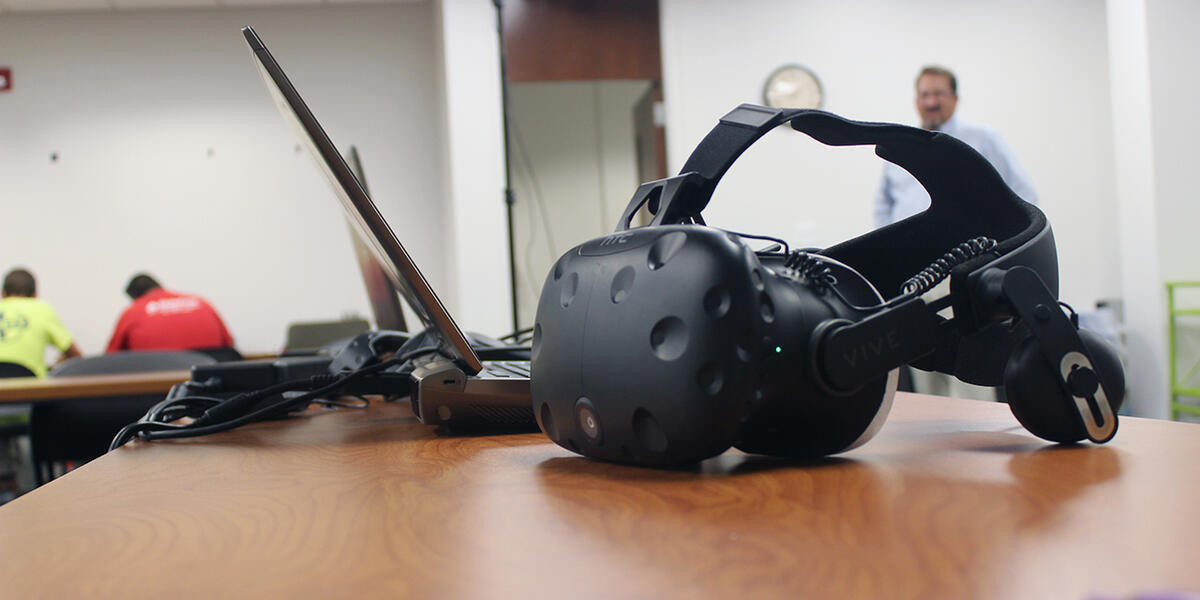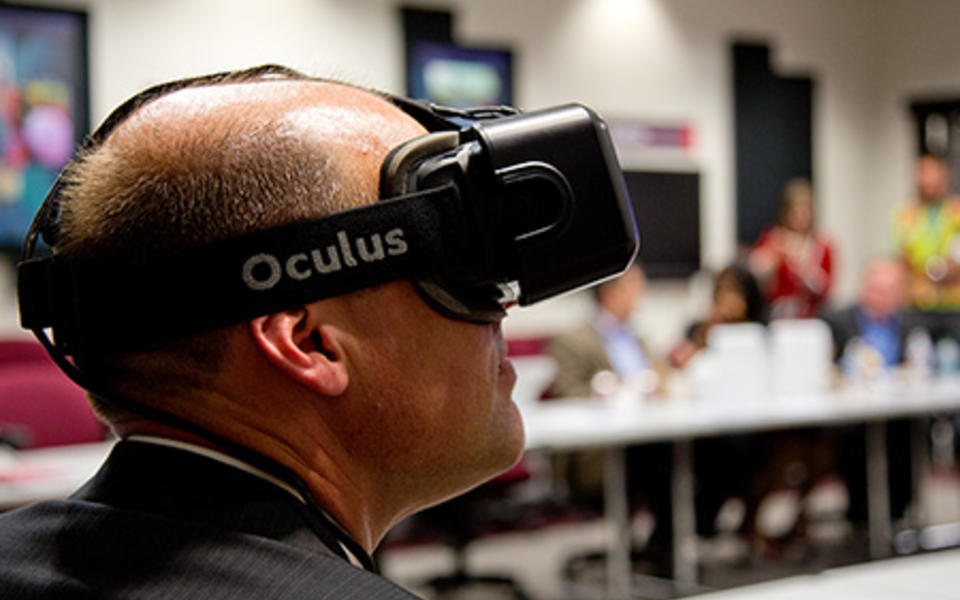Emerging technology, Safety, Virtual construction & technology
Imagine this: after going through the basics of fall protection, you're finally hoisted in the air to begin your work. You look over the ledge and peer down at the concrete hundreds of feet below you. There's a guardrail so you assure yourself that you're protected. Then in a swift moment, you make the wrong move and you sense the danger a second too late as you begin to fall off the ledge.
But instead of tumbling several stories down, your feet are planted on the ground in the safety of a training room. It was all just a simulation.
For many, the dangers of a construction site don't feel real until it happens to them. About 38 percent of construction deaths in 2016 were a result of falls, and they continue to be the leading cause of death in construction, followed by being struck by an object and electrocution.
I had my own close call on a jobsite early in my career when a metal louver dropped four stories and hit me on the head. Workplace accidents can have devastating consequences, and I'm lucky to have survived mine. Jobsites are certainly safer than they were 30 or 40 years ago, and we have to keep that momentum going.
So how do we continue to make jobsites safer for each and every tradesperson working on our projects? The answer to enhancing how we train tradespeople may come from an unlikely source: virtual reality (VR).
While you may think of video games when you hear about the hot topic of VR, it could hold the key to a new approach to safety training. VR can offer a hands-on approach that provides an amazingly realistic environment without real-life hazards. This type of learning is going to be the way of the future, and its widespread use may be closer than you think.
A (virtual) hands-on training
Pepper has been partnering with Purdue University and MindForge, a division of International Risk Management Institute, to advise, provide feedback and test VR safety training programs as they're being developed.
Our involvement started before the Purdue Polytechnic Institute and Envision Center received the Susan Hardwood Grant to develop the first virtual reality simulation training for OSHA. And since they received the grant, we've continued to be an adviser for the project by providing feedback. MindForge was simultaneously developing VR crane signaling safety training for the ACIG Life-Saving Commitments initiative, so we connected the two groups so they could collaborate on their parallel efforts.
We're essentially a facilitator, and it's truly been an opportunity to take the old, traditional way of relaying safety information and repackaging it to save even more lives. As the groups have made progress, it's become increasingly clear that this new medium will help construction workers better learn and retain information, prevent accidents and save lives.
"We can place them inside a digital environment where we can control all the variables, present them with unique situations, hypothetical problems, as well as give them instructional materials in that safe and informative environment," George Takahashi, Technical Director of Purdue Envision Center
Up first: fall protection
We like to be on the cutting edge with construction safety, and these trainings can have a huge impact to reduce the number of significant injuries and fatalities. The VR experience gets the tradespeople engaged, opens their minds and prepares them to absorb knowledge. It's different from sitting in a darkened room and watching a slideshow that makes it easy for your mind to drift off. In the VR world, you're there, your mind is focused on what's happening and you're immersed in the gravity of the situation. If you're walking on a steel beam in the virtual world, it might feel like you could really fall if you misstep, and that makes a much deeper impression on your brain.
Once Purdue neared completion of the OSHA training project, which focused on fall protection, four Pepper carpenters put on headsets and grabbed the controls as they went through the training's first five modules: basic overview of fall protection; harness and lanyards; ABC & Ds of fall protection, ladder safety; and scaffolding. The final two modules in development will cover residential safety and roofing.
"It's much more engaging and much more interesting. It forces your participation rather than standing in the back and listening without saying anything. There's no substitute for hands-on training and I feel like this is as close as you can get to a real-life setting while being in the comfort of a classroom or safe setting," Bobby Hicks, Pepper carpenter
The safety training offers real lessons in a virtual setting, and it's revolutionizing how our industry can tackle educational lessons in the future. So far we've been facilitators in this training and offered feedback, which we'll continue to do. And soon, we'll be the consumers.
Jobsite safety has come a long way over the last several decades. Throughout my career I've spent countless hours on jobsites, identifying risks and leading safety orientations and trainings. Twenty-five years ago I would have never imagined that some fancy goggles, realistic graphics and tech-savvy individuals could usher in a new era of safety for our industry. Now the future is here.
About the Author





